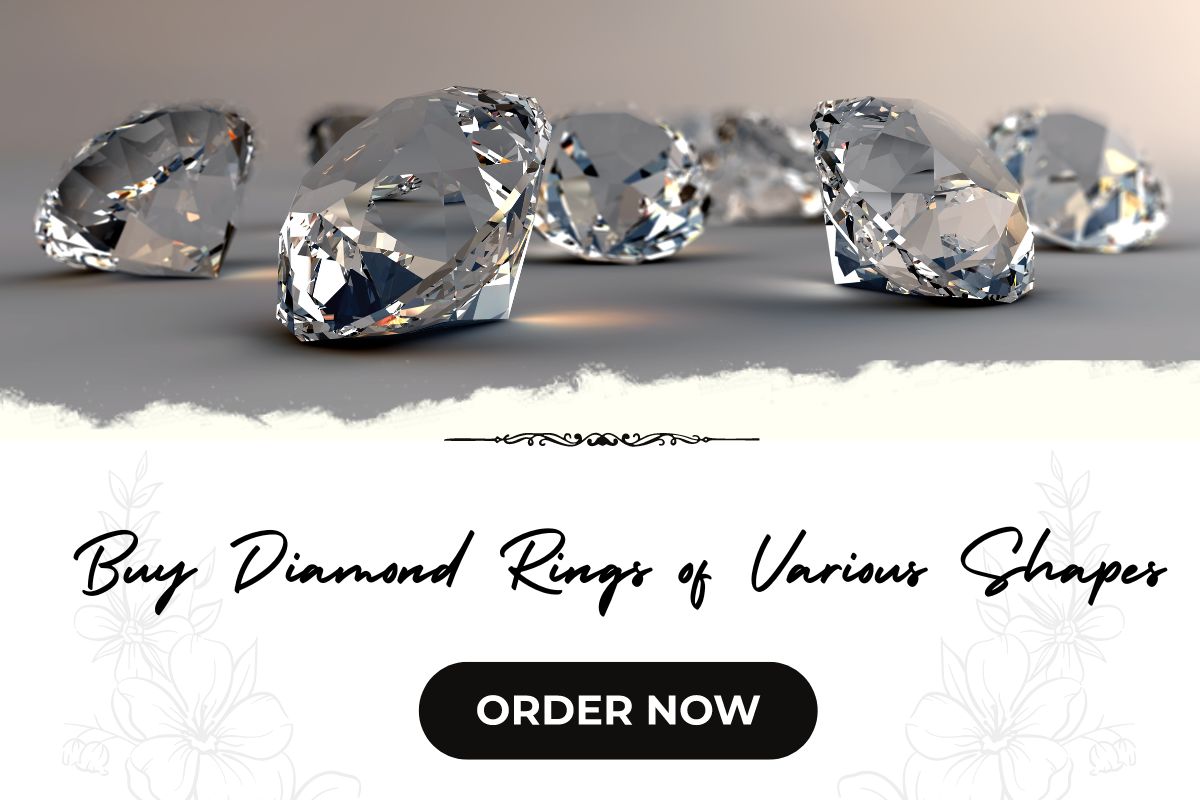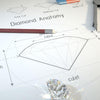
What Are Diamond Facets: Understanding Their Role in Sparkle and Brilliance
Diamond facets are the numerous flat surfaces on a diamond that are strategically created and arranged to optimize the stone's interaction with light. Each facet is meticulously cut and polished to exact angles. This enables light to enter the diamond, reflect internally, and exit back out to produce the sparkle that diamonds are famous for. The number and pattern of facets affect the brilliance, fire, and scintillation of a diamond. The standard round brilliant diamond boasts 58 facets.
Table Of Contents
- Understanding Diamond Facets
- Basic Anatomy of a Diamond
- The Role of Facets in Diamond Brilliance
- Types of Diamond Cuts and Faceting Styles
- Factors Affecting Facet Quality and Diamond Value
- Craftsmanship in Diamond Cutting
- Evaluating Diamond Facets When Purchasing
- Beyond the Facets: Diamond Anatomy Terms Explained
- Frequently Asked Questions
I understand that the precision and arrangement of these facets are critical to a diamond's visual appeal. The facets must work together to maximize light return and enhance the diamond's overall aesthetics. The traditional round brilliant diamond is a prime example of optimal facet geometry. Its facets are engineered to create an unrivaled display of light performance. Other diamond shapes also incorporate unique facet patterns to enhance their distinct characteristics.
Understanding Diamond Facets
Diamond facets are the numerous flat, polished surfaces on a diamond that both absorb and reflect light. My examination of diamond facets reveals how vital they are for enhancing a diamond's attributes, such as its brilliance, which is the total light reflected from a diamond, and its fire, denoting the dispersion of light into the colors of the spectrum.
1. Table
The largest facet of the diamond located on the top, allowing light to enter the stone.
2. Crown
The top portion of the diamond above the girdle, comprising smaller facets that contribute to brilliance.
3. Girdle
The narrow band around the widest part of the diamond, separating the crown from the pavilion.
4. Pavilion
The bottom portion of the diamond below the girdle, also comprising smaller facets that reflect light back through the table.
5. Culet
The small facet at the bottom tip of the diamond, preventing damage to the stone.
6. Facet Juncture
The points where facets meet, influencing the diamond's overall appearance and light performance.
Different diamond cuts possess varying facet counts and arrangements, each designed to maximize the diamond's optical performance. For example, the Princess cut is renowned for its sharp, uncut corners with anywhere from 58 to 144 facets. Meanwhile, the Emerald cut has longer, step-cut facets emphasizing clarity due to their ability to reveal any inclusion.
In my knowledge, precision in the cutting process is crucial. The arrangement and alignment of the facets must be calculated to optimize the interaction with light, enhancing the diamond's ability to refract light which contributes to its sparkle. This interplay of light through the facets leads to the stone's perceived scintillation—the flash of light visible as the diamond, or the light source, moves.
Through proper facet layout, a diamond will emit the sought-after brightness, transparency, and scintillate effectively. When selecting a diamond, one should consider the type and arrangement of facets, as these influence its overall appearance and luminosity.
Basic Anatomy of a Diamond

When examining the anatomy of a diamond, it's essential to understand the role each part plays in contributing to the stone's overall appearance and brilliance. Let's start with the top portion of the diamond, known as the crown. The crown is situated above the girdle (the widest part of the diamond) and is chiefly responsible for dispersing light into various colors.
Beneath the girdle, one can find the pavilion, which is the lower part of the diamond extending down to the culet. The pavilion's primary function is to reflect light that enters the diamond back through the top, enhancing the gem's sparkle.
The girdle itself can vary in thickness and is integral to the structuring of the diamond, forming the boundary between the crown above and the pavilion below.
Centered on the crown is the table facet, the largest facet of a diamond. My observations suggest that a well-proportioned table is key to allowing maximum light to enter and refract within the diamond.
Lastly, the culet facet, a small or pointed facet at the diamond's base, is a critical feature that protects the diamond's tip from chipping.
A precise and symmetrical arrangement of these parts is pivotal. It's my understanding that the interplay between them affects the diamond's ability to handle light, which ultimately determines its beauty and quality.
The Role of Facets in Diamond Brilliance
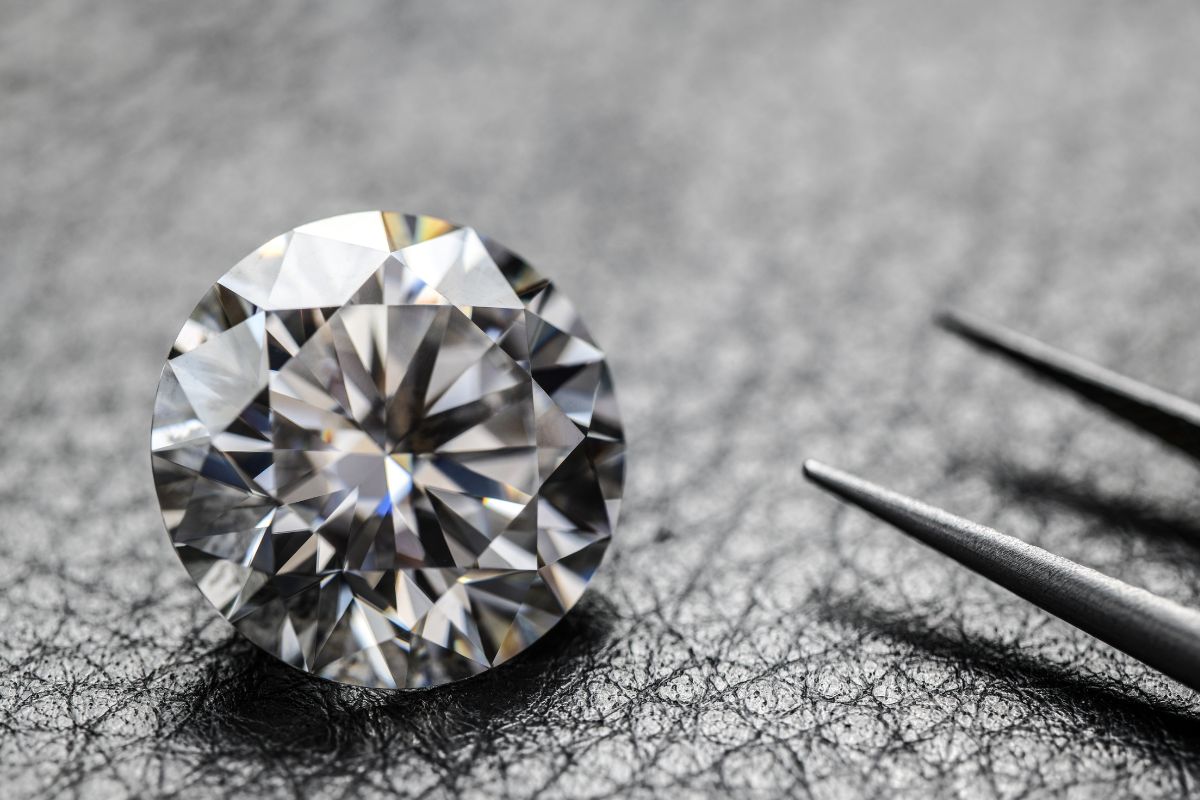
Diamond facets are masterfully crafted to manage light, creating the much-sought-after brilliance that makes diamonds so captivating. My insights will specifically examine how facet arrangement, symmetry and proportions, and the overall cut grade contribute to a diamond's visual appeal.
Facet Arrangement and Light Performance
The geometry and alignment of a diamond's facets are fundamental to its light performance—how it captures light and reflects it back to the eye. Each facet acts like a mirror, with the table (the largest facet on the top), crown (above the girdle), and pavilion (below the girdle) facets working in harmony. Good facet arrangement ensures that light entering the diamond is reflected internally and dispersed back through the top, enhancing the stone's brilliance (white light reflections), fire (color dispersion), and sparkle (flashes of light). Therefore, the more precise the facet arrangement, the better the diamond handles light to create that mesmerizing effect.
Importance of Symmetry and Proportions
The facets must not only be well arranged but also symmetrical and in the correct proportion to each other. The table size, crown height, and pavilion depth all play a role in how light travels within the diamond. Symmetry is vital because it ensures that each facet lines up perfectly with its opposing number, allowing for optimal reflection and refraction of light. Proportions, too, are important; if a diamond is cut too deep or too shallow, light can leak out from the bottom or the sides, reducing the stone's brilliance and fire. Excellent symmetry and well-balanced proportions are essential for a diamond to showcase its full sparkling potential.
Understanding Cut Grade
The Gemological Institute of America (GIA), a prominent entity in diamond grading, evaluates diamond quality based on a detailed cut grade system that considers facet arrangement, symmetry, and polish. The cut grade, ranging from Excellent to Poor, provides a measure of how well a diamond has been cut and ultimately how well it reflects light. A diamond with an Excellent cut grade will have a high level of brilliance, fire, and sparkle, while a diamond with a lower cut grade will lack the same life and vibrancy. My examination of diamonds' light performance consistently highlights that a high cut grade is integral for a diamond to truly dazzle.
Types of Diamond Cuts and Faceting Styles
| Diamond Cut | Description | Faceting Style |
|---|---|---|
| Round Brilliant | The most popular and classic diamond cut, featuring a round shape with 58 facets designed to maximize brilliance and fire. | Brilliant Cut |
| Princess Cut | Square or rectangular shape with pointed corners and a pyramid-like appearance. Typically has 58 facets. | Modified Brilliant Cut |
| Emerald Cut | Rectangular shape with stepped facets and cropped corners. Known for its elegant appearance and hall-of-mirrors effect. | Step Cut |
| Asscher Cut | Similar to the Emerald Cut but with a square shape and more brilliant-cut facets. Known for its vintage appeal. | Step Cut |
| Oval Cut | Features an elongated oval shape with 56 to 58 facets, designed to maximize brilliance and elongate the finger. | Brilliant Cut |
| Marquise Cut | Long and narrow shape with pointed ends. Typically has 56 facets and is designed to maximize carat weight. | Modified Brilliant Cut |
| Pear Cut | Combines the round and marquise shapes, featuring a rounded end and a pointed end. Typically has 58 to 71 facets. | Brilliant Cut |
| Radiant Cut | Rectangular or square shape with trimmed corners and brilliant-cut facets. Known for its brilliance and versatility. | Brilliant Cut |
| Heart Cut | Heart-shaped with a cleft at the top and rounded lobes. Typically has 56 to 58 facets and symbolizes love and romance. | Modified Brilliant Cut |
| Cushion Cut | Square or rectangular shape with rounded corners and large facets. Known for its antique charm and sparkle. | Modified Brilliant Cut |
In the world of diamonds, the brilliance and appeal largely depend on the cut and arrangement of facets. Let me take you through the types of diamond cuts and their distinctive faceting styles, which significantly influence a diamond's sparkle and shape.
Round Brilliant Cut and its Facets
The Round Brilliant Cut is perhaps the most celebrated diamond shape, brought to perfection by Marcel Tolkowsky in 1919. This cut features a total of 58 facets: usually 33 on the crown (top part) and 25 on the pavilion (bottom part). The crown comprises a table facet, 8 star facets, 8 kite facets (also called upper main facets), and 16 upper girdle facets. The pavilion includes 8 main facets and 16 lower girdle facets, along with the girdle which encircles the diamond.
- Main Facets: These are the broadest facets on a diamond and play a crucial role in light reflection.
- Star and Kite Facets: Located around the table, they help in dispersing light to create that signature sparkle.
- Girdle Facets: Serving as the intersection between the crown and pavilion, the girdle can be faceted or polished.
Fancy Cut Diamonds and Facet Variations
Fancy cut diamonds, like pear, oval, cushion, radiant, emerald, princess, marquise, and Asscher cuts, offer an array of facet arrangements and variations. Each of these shapes has a unique blueprint for how their facets are arranged which, in turn, affects how they interact with light.
- Emerald Cut: Known for its clarity, the Emerald cut is a type of step cut characterized by parallel, linear facets that create a hall-of-mirrors effect.
- Radiant Cut Diamonds: These diamonds blend the lines between step and brilliant cuts, with a mixed facet pattern that maximizes brilliance.
- Cushion and Oval Diamonds: These cuts often have added facets to enhance their sparkle, deviating from the standard numbers in round brilliants.
Step Cut, Mixed Cut, and Other Styles
- Step Cuts are hallmarked by their rectilinear facets that run parallel to the girdle, much like steps.
- Emerald and Asscher cuts are quintessential examples of this, offering a window-like view into the diamond.
- Mixed Cuts combine the techniques of both step and brilliant cuts, harnessing the advantages of each.
- Polished Girdle: In some diamond cuts, the girdle is not faceted but polished to a smooth finish, which influences how the diamond's facets meet at its edge.
Each diamond shape and cutting style has its own intricate facet arrangement designed to showcase the stone's inherent beauty through the interplay of light and reflection.
Whether it's the intricate complexity of the round brilliant cut or the clean lines of the step cut, the mastery of diamond faceting is what unlocks the gem's true radiance.
Factors Affecting Facet Quality and Diamond Value
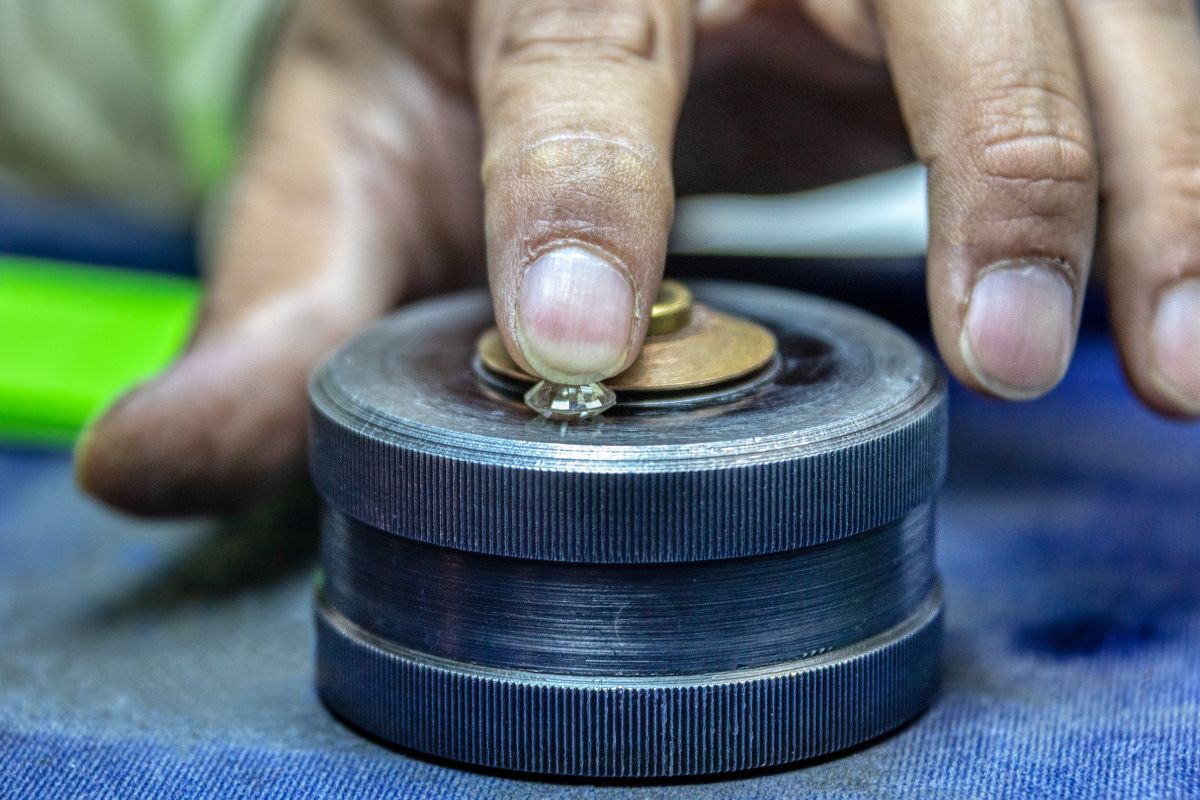
The quality of diamond facets significantly influences a diamond's aesthetic appeal and its market value.
Precision in cut, alignment, and smoothness determines the overall brilliance, sparkle, and brightness of the gemstone.
Polish and Surface Smoothness
I recognize that the polish of a diamond's facets is paramount, as it affects how light interacts with the surface.
A high-quality polish results in smooth facets that reflect light efficiently, enhancing the brightness and sparkle.
The Gemological Institute of America (GIA) grading scale rates polish from Excellent to Poor.
Diamonds exhibiting a polish rating less than Good may have visible polish lines that can dull the stone's appearance, thus potentially reducing its value.
Impact of Inclusions and Blemishes
The presence of inclusions and blemishes are natural characteristics that can impact a diamond's facet quality.
While inclusions are internal characteristics, blemishes are surface imperfections.
I consider clarity as a crucial factor since it refers to the absence of these characteristics, making it a critical determinant of a diamond's value.
Inclusions near or on facets can disrupt the light path, affecting the stone's brilliance and sparkle.
Meanwhile, facet symmetry enhances uniformity and craftsmanship, aiding in the optimal return of light.
A GIA report provides a detailed assessment of a diamond's clarity, thereby assisting in understanding its true quality and value.
Craftsmanship in Diamond Cutting
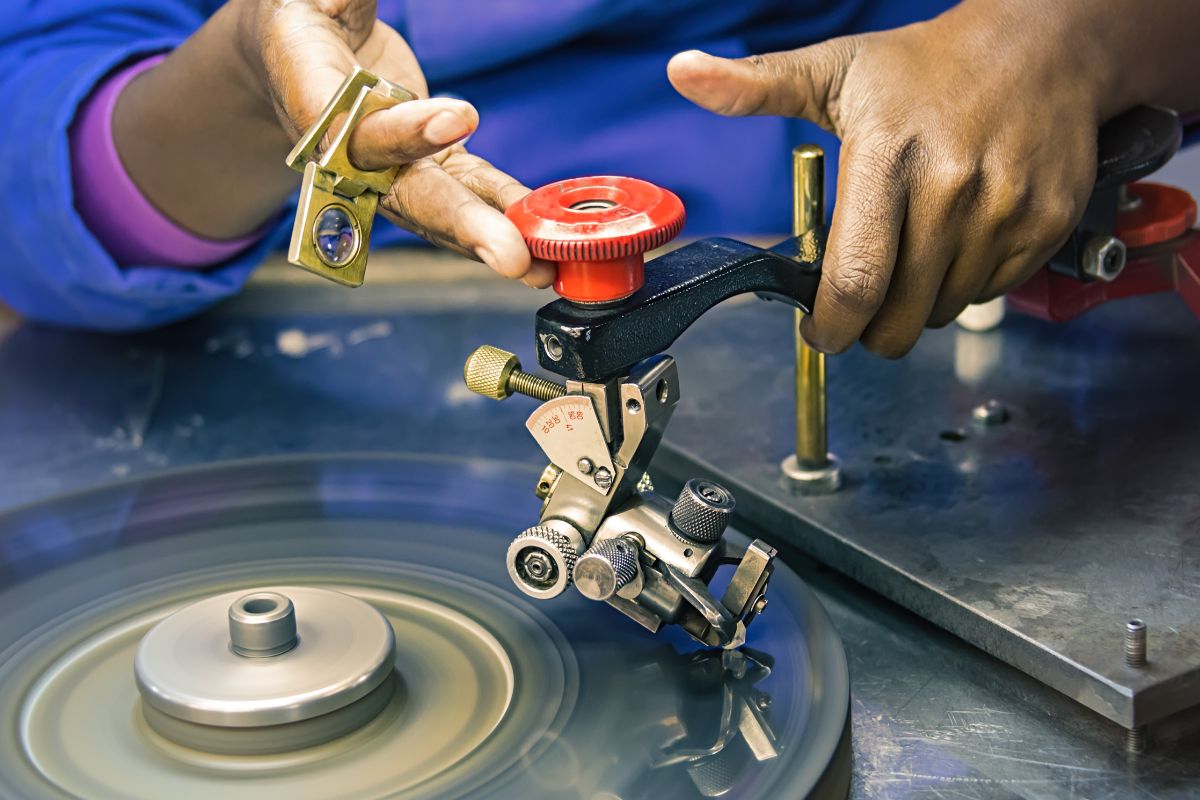
When discussing diamond cutting, craftsmanship is paramount in transforming a rough stone into a masterful piece of faceted art.
My knowledge on this subject is keen, recognizing that each facet must be carefully cut and polished to exacting standards.
Symmetry plays a crucial role in how the light is refracted through the diamond, thus impacting its brilliance and fire.
As a diamond cutter, one's expertise is tasked with meticulously planning and executing the cut to maximize the stone's aesthetic qualities while minimizing waste.
To accomplish this, I ensure the diamond's girdle thickness is appropriate, affecting not just aesthetics but durability.
The polish on each facet needs to be flawless as well, as it can dramatically affect the way a diamond interacts with light.
The Gemological Institute of America (GIA) devised a comprehensive grading system to evaluate these qualities.
In assessing the cut grade, GIA considers the uniformity of the facet sizes, their alignment, and the quality of polish.
A high cut grade reflects superior craftsmanship which is vital to a diamond's overall beauty.
Working as a jeweler myself, I am familiar with the intricate skill and precision required to form the facets that define a diamond's shape, its intricate play of light, and ultimately, its desirability.
Superior craftsmanship in cutting can significantly augment the natural allure of a diamond, making it a cherished piece for generations.
Evaluating Diamond Facets When Purchasing
When I am considering purchasing a diamond, especially for significant pieces such as engagement rings, I pay close attention to the facets of the diamond.
Facets are the smooth, flat surfaces on a diamond that have a critical impact on the stone's ability to reflect light, contributing to its brightness, sparkle, and overall visual appeal.
Understanding Facets:
- Brilliant-cut diamonds are known for their ability to optimize light reflection and, consequently, their sparkle.
- Step-cut diamonds, like the Emerald cut, feature long, parallel facets and are valued for their clarity.
Here's what I consider specifically when looking at diamond facets:
-
Facet Symmetry:
- Symmetrically aligned facets ensure a consistent and attractive reflection of light.
- Poor symmetry can result in dullness or uneven sparkle.
-
Facet Quality:
- I look for smooth and well-polished facets to maximize shine.
- The quality of the facet's polish is graded from Excellent to Poor.
-
Facet Count and Shape:
- The traditional round cut has 57 or 58 facets, but other shapes like the Princess cut can have up to 144 facets.
- More facets can mean more sparkle, but also can increase the complexity of evaluating clarity.
-
GIA Certification:
- I trust diamonds graded by the Gemological Institute of America (GIA). Their evaluations give me confidence in the diamond's characteristics.
Beyond the Facets: Diamond Anatomy Terms Explained
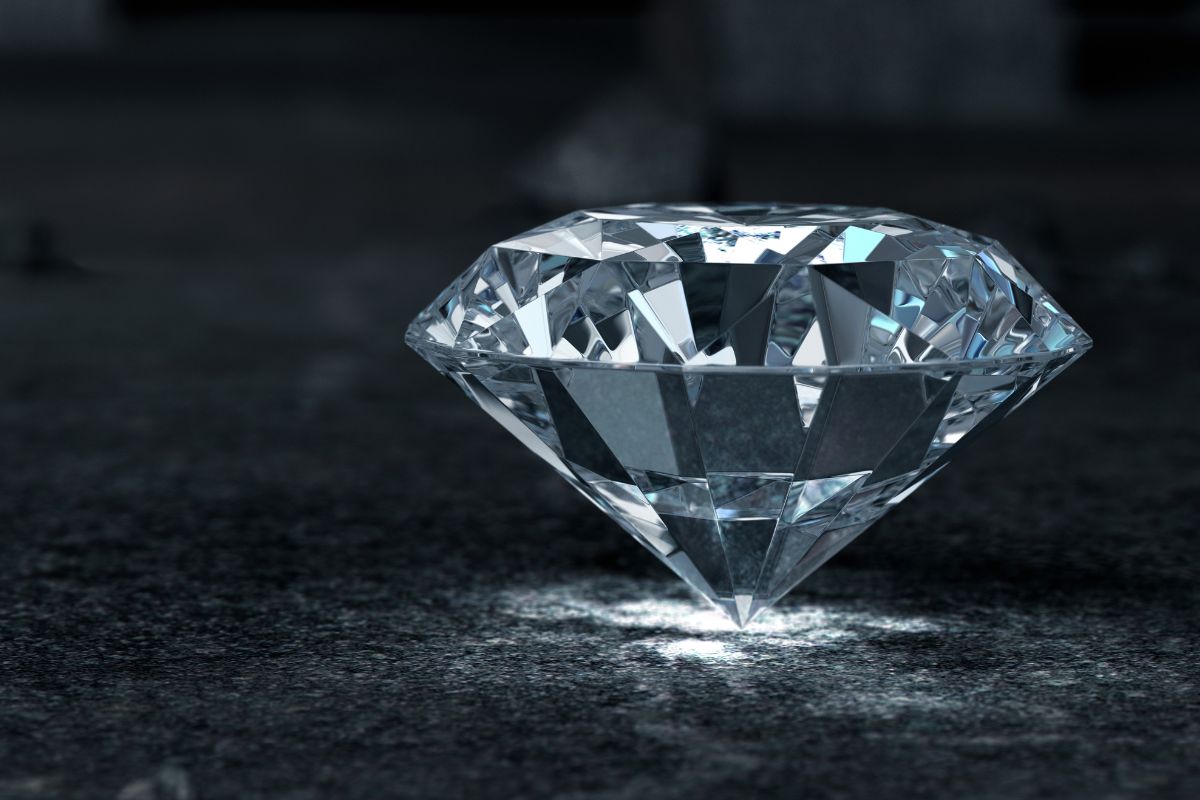
In this section, I'll break down the intricacies of a diamond's structure. Understanding the girdle, crown, pavilion, culet, and table helps to appreciate how each part plays a role in a diamond's beauty and function.
Understanding the Girdle
The girdle is the outer edge or rim of the diamond where the crown (top part) meets the pavilion (bottom part). It's important because it affects the diamond's overall shape and is often where a diamond is held in place by the setting.
Girdle thickness may vary; it can be uniform or non-uniform, affecting both aesthetics and durability.
Girdles can be categorized as:
- Very Thin to Extremely Thick: A rating that can impact durability.
- Polished or Faceted: Affects how the girdle interacts with light.
- Waxy or Grainy: Textural characteristics.
Distinguishing the Crown and Pavilion
The crown is the upper portion of a diamond above the girdle, characterized by its height and the arrangement of crown facets which include the table facet and star facets.
Whereas, the pavilion is the lower part beneath the girdle.
Correct pavilion depth and angle contribute to the stone's brilliance by controlling the light reflection within the diamond. Here's how they differ:
- Crown Height: Measurement from the girdle to the table which affects the light's path before it exits the stone.
- Crown Facets: Usually consist of 8 star facets, 8 kite-shaped facets, and usually 16 upper main facets.
- Pavilion Depth: Directly influences light reflection and refraction inside the diamond.
- Pavilion Facets: Typically include 16 lower main facets that converge at a point or near the culet.
Other Diamond Features: Culet, Table, and More
The table is the flat facet on the top of the diamond and is the largest facet on a round brilliant cut diamond. It plays a key role in how light performs when it hits the diamond.
Ideally, the table size should be proportional to the diameter of the diamond for optimal light return.
- Culet: The tiny point or facet at the diamond's base which should be minimal or non-existent to prevent light leakage.
- Round Brilliant Cut: Consisting of 57 or 58 facets (if there is a culet), this cut’s facet arrangement is optimized for maximum sparkle.
- Main Facets: The table, star, upper main, and lower main facets work cohesively to reflect and refract light, creating the diamond's signature fire and brilliance.
- Setting Considerations: Engagement rings and other jewelry settings must secure these features without obscuring them, ensuring the diamond's brilliance is fully visible.
Also Read
Frequently Asked Questions
In this section, I address some common inquiries regarding the facets of a diamond, clarifying their impact on the gem's overall characteristics and value.
How many facets are typically found on a round brilliant diamond?
A round brilliant diamond typically has 58 facets, which include the table, crown, girdle, pavilion, and culet.
Can the number of facets on a diamond affect its brilliance?
Yes, the number of facets and their arrangement can influence a diamond's brilliance. Optimal facet arrangements maximize the reflection and refraction of light, enhancing the diamond's sparkle.
What are the different names for the facets on a diamond?
The facets on a diamond are named based on their position: the table is the large flat top, the crown is above the girdle, the girdle itself is the mid-section dividing the crown and pavilion, and the pavilion is beneath the girdle down to the culet, the small point at the bottom.
Are diamonds with more facets considered more valuable?
Not necessarily. While more facets can contribute to a diamond's light performance, overall value is also affected by cut quality, color, clarity, carat weight, and market demand.
What impact does the facet pattern have on a diamond's appearance?
The facet pattern affects how light interacts with the diamond. A well-proportioned diamond with a precise facet pattern will appear more brilliant and fiery. In contrast, a poorly cut diamond may look dull.
What is the difference between standard and modified facet arrangements in diamonds?
Standard facet arrangements are traditional cuts. For example, the round brilliant has a pre-defined number of facets.
Modified facet arrangements, on the other hand, include custom cuts or variations of standard cuts. These are designed to create unique reflective patterns or to maximize the diamond's visual appeal.
Checkout some of our top collections:
- Moissanite Engagement Rings
- Moissanite Earrings
- Moissanite Bracelets
- Moissanite Solitaire Engagement Rings
- Moissanite Mens Engagement Rings
- Moissanite Princess Cut Stones
- Lab Grown Engagement Rings
- Lab Grown Diamond Earrings
- Lab Grown Diamond Wedding Bands
Leave a comment
Please note, comments must be approved before they are published.

